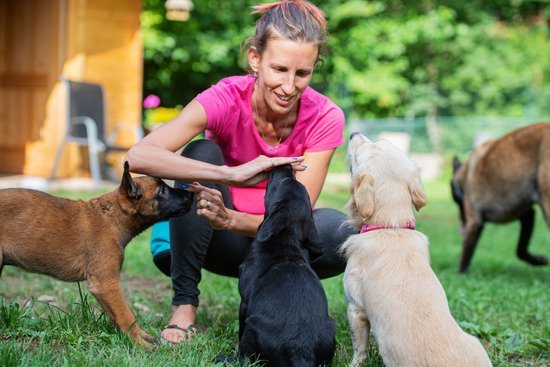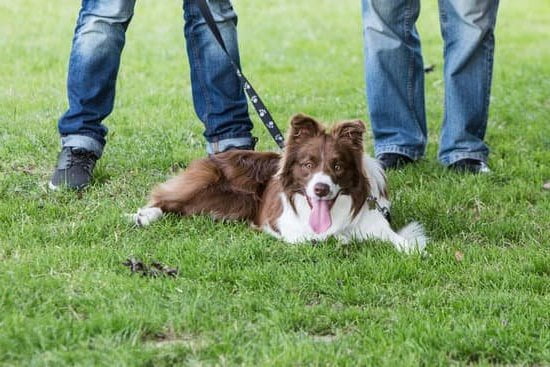Are you considering crate training for your furry companion? Crate training is a valuable tool for dog owners and can provide numerous benefits for both you and your pet. Whether you have a new puppy or an adult dog, proper crate training can help create a safe and comfortable environment for your pet while also facilitating their adjustment to your household rules and routines.
A well-trained dog that is
In this section, we will explore the ins and outs of crate training, including its benefits, how to choose the right crate for your dog, and step-by-step instructions on how to effectively train your pup to love their crate.
When done correctly, crate training can be an incredibly useful tool in raising a happy, well-behaved canine companion. This article will guide you through the process of crate training, providing you with tips on successful implementation while addressing common mistakes and troubleshooting issues. By the end of this section, you will have all the information you need to start on the path towards successful crate training for your beloved pet.
Benefits of Crate Training for Dogs
Crate training for dogs comes with numerous benefits, both for the pet and the owner. Here are some of the key advantages of crate training:
1. Potty Training: One of the primary benefits of crate training is that it can aid in potty training for puppies. Dogs have a natural instinct not to soil their living space, so when they are in a crate, they will learn to hold their bladder and bowels until they are taken outside.
2. Safety and Security: A dog crate provides a secure and safe space for your furry friend, especially when you are away from home or at night. It can prevent destructive behavior, such as chewing on furniture or getting into potentially harmful objects.
3. Travel Convenience: Crate trained dogs are often more comfortable during travel because they have a familiar and secure space to retreat to. This can make car trips, visits to the veterinarian, or stays in hotels much less stressful for both the dog and the owner.
4. Assistance with Behavioral Issues: Crate training can help with separation anxiety, excessive barking or whining, and other behavioral issues by providing a secure and comforting environment for the dog.
Choosing the Right Crate for Your Dog
When choosing a crate for your dog, it is important to consider the size and material of the crate. Here are some factors to keep in mind when selecting the right crate for your furry friend:
1. Size: The crate should be large enough for your dog to stand up, turn around, and lie down comfortably. Measure your dog from the tip of their nose to the base of their tail and add a few inches to find the appropriate length for the crate. Additionally, ensure that the height of the crate allows your dog to stand up without hunching over.
2. Material: Crates come in various materials such as wire, plastic, or soft-sided. Wire crates are well-ventilated and allow your dog to see their surroundings, while plastic crates provide a more den-like environment that can help with anxiety. Soft-sided crates are lightweight and easy to transport but are not suitable for dogs who tend to chew or scratch.
3. Portability: Consider whether you will need to move the crate frequently or take it on trips. If portability is a concern, a collapsible wire or soft-sided crate may be the best option.
Keep in mind that every dog is different, so it may take some trial and error before finding the perfect crate for your pup. Once you have selected a crate, make sure to properly introduce it to your dog and associate it with positive experiences in order to ensure they become dog crate trained successfully.
Step-by-Step Guide to Crate Training a Puppy
Crate training a puppy is an essential part of their early development and can set them up for success in the future. It helps with potty training, prevents destructive behavior, and provides them with a safe and secure space of their own. Here’s a step-by-step guide to effectively crate train your puppy.
Introduction
The first step in crate training your puppy is to introduce them to the crate in a positive way. Place the crate in an area where the family spends a lot of time, such as the living room or kitchen. Leave the door open and encourage your puppy to explore it on their own terms. You can place treats or toys inside to entice them to go inside.
Feeding in the Crate
Once your puppy is comfortable going into the crate voluntarily, start feeding them their meals inside. This will create a positive association with the crate and help them see it as a safe and enjoyable space.
Gradual Enclosure
After your puppy is comfortable eating in the crate, you can start closing the door for short periods while they are eating. Gradually increase the amount of time they spend in the closed crate after finishing their meal, always providing lots of praise and treats for good behavior.
It’s important to remember that every dog is different, so be patient and go at your puppy’s pace when crate training. With consistency, positive reinforcement, and plenty of patience, you can successfully crate train your puppy.
Common Mistakes to Avoid in Crate Training
Not Making the Crate a Positive Space
One common mistake in crate training is not making the crate a positive and comfortable space for your dog. Many pet owners see the crate as a form of punishment and use it only when they need to confine their dog. This can lead to negative associations with the crate, making it difficult for the dog to feel comfortable and secure inside.
To avoid this mistake, it’s important to make the crate a positive space by adding soft bedding, toys, and treats inside. You can also feed your dog inside the crate to create a positive association.
Using the Crate for Too Long
Another mistake is using the crate for too long periods of time. While crate training can be beneficial, it’s important not to leave your dog confined for extended periods. Dogs are social animals and need interaction and exercise. Using the crate excessively can lead to anxiety, restlessness, and even behavioral problems. It’s crucial to provide regular breaks outside of the crate for bathroom breaks, exercise, and playtime.
Inconsistent Use of the Crate
Consistency is key in crate training, but many pet owners make the mistake of using the crate inconsistently. This can confuse your dog and hinder their progress in learning to be comfortable in the crate. Make sure to use the crate at consistent times and for consistent durations each day.
Additionally, avoid giving in if your dog whines or barks when in the crate – this sends a message that they can get their way by making noise. By being consistent with their use of the crate, you’ll help your dog understand what is expected of them while creating a routine that makes them feel secure.
How to Make the Crate a Positive and Comfortable Space for Your Dog
Crating training your dog is not just about confining them to a specific space, but also making that space a positive and comfortable environment for them. This section will discuss the importance of creating a positive association with the dog’s crate and how to achieve it.
To make the crate a positive and comfortable space for your dog, start by placing comfortable bedding or blankets inside. This will encourage your dog to view the crate as a cozy den rather than a punishment. You can also add some of your dog’s favorite toys or chews to keep them entertained while they are in the crate.
Another important aspect of making the crate a positive space is by associating it with positive experiences. You can do this by feeding your dog their meals inside the crate or giving them treats when they willingly enter it. It’s crucial to never use the crate as a form of punishment, as this will only create negative associations with it.
In addition, consider placing the crate in a quiet and peaceful area of your home where your dog can feel safe and relaxed. This will help reduce any anxiety or stress associated with being confined. By following these steps, you can ensure that your dog sees their crate as a safe and comforting retreat rather than a place of confinement.
| Aspect | Description |
|---|---|
| Bedding | Add comfortable bedding or blankets to create a cozy den atmosphere |
| Toys and Treats | Include favorite toys and give treats when entering willingly |
| Quiet Location | Place in calm area for reduced anxiety and stress during confinement |
Troubleshooting Common Crate Training Issues
Crate training a dog can sometimes come with its challenges. It is not uncommon for pet owners to encounter issues when trying to train their dogs to use a crate. However, many of these issues can be resolved with the right approach and understanding.
One common issue that pet owners face is that their dog whines or barks incessantly while in the crate. This behavior can be distressing for both the dog and the owner. It is important to understand that this behavior may stem from anxiety or fear of isolation.
To address this, it is essential to slowly acclimate the dog to the crate by initially leaving them in for short periods and gradually increasing the time. Additionally, providing comfort items such as a favorite toy or blanket can help alleviate their stress.
Another common problem is when a dog refuses to enter the crate altogether. This can be due to negative associations with the crate or a lack of proper introduction. To tackle this issue, it is crucial to make the crate an inviting and positive space for the dog.
Placing treats, food, and other incentives inside the crate can encourage them to voluntarily enter it. It’s also recommended to not force them into the crate as this may create further resistance.
| Common Crate Training Issue | Solution |
|---|---|
| Excessive whining or barking | Gradually acclimate the dog to the crate and provide comfort items |
| Refusal to enter the crate | Make the crate an inviting space by placing treats and incentives inside |
As with any type of training, consistency, patience, and positive reinforcement are key factors in addressing common crate training issues. By understanding your dog’s behavior and needs, you can effectively troubleshoot these problems and ensure successful crate training for your pet.
Gradually Transitioning Away From the Crate
As your dog becomes more accustomed to being in a crate, you may eventually want to transition them away from using it altogether. This can be a gradual process that requires patience and consistency. Here are some tips for successfully transitioning your dog away from the crate.
First, it’s important to start by gradually extending the amount of time your dog spends outside of the crate. Begin by leaving them out of the crate for short periods while you are at home, gradually increasing the duration over time. This will help them become more comfortable and confident being outside of their crate.
Another important aspect of transitioning away from the crate is to create a safe and designated space for your dog when they are not in the crate. This could be a specific area in your home, such as a cozy corner with their bed and toys. Ensure that this space is free of any potential hazards and that your dog has everything they need to feel comfortable and secure.
It’s also crucial to continue reinforcing positive behavior even when your dog is no longer using the crate. Use positive reinforcement techniques such as treats, praise, and rewards to encourage good behavior while they are out of the crate. This will help them associate being outside of the crate with positive experiences, making the transition smoother and more successful.
By following these tips and taking a gradual approach, you can successfully transition your dog away from using a crate while ensuring that they feel safe and secure in their new environment. Remember to be patient and consistent, as every dog will adjust at their own pace.
Success Stories
In conclusion, dog crate training can truly transform a dog’s behavior and overall well-being. By providing a safe and comfortable space for the dog, crate training can help alleviate anxiety, reduce destructive behavior, and establish healthy routines. Choosing the right crate, following a step-by-step training guide, avoiding common mistakes, and making the crate a positive space are all crucial steps in the process of crate training.
Furthermore, success stories from real-life examples of dogs thriving with crate training demonstrate just how effective this method can be. Whether it’s helping a rescue dog regain confidence or providing a puppy with structure and boundaries, the benefits of crate training are clear. These success stories serve as inspiration for dog owners who may be hesitant about crate training or facing challenges along the way.
While every dog is unique and may require different approaches to crate training, the overarching theme is that with patience, consistency, and positive reinforcement, dogs can become comfortable and even enjoy their time in a crate. As with any form of training, it’s important to remember that progress takes time and dedication. With the right approach, many dogs go on to happily coexist with their crates as a safe haven or cozy retreat when needed.
Frequently Asked Questions
What Does a Dog Being Crate Trained Mean?
Crate training for dogs involves teaching them to view their crate as a safe and comfortable space, similar to a den. This helps with house training and can provide a secure place for the dog when needed.
Is It Good for a Dog to Be Crate Trained?
Crate training can be beneficial for dogs as it gives them a safe space to retreat to when they need some alone time or feel anxious. It can also assist in house training and keep the dog out of trouble when unsupervised.
How Long Until a Dog Is Crate Trained?
The length of time it takes to crate train a dog varies depending on the individual dog and its previous experiences. Some dogs may take only a few days to get used to the crate, while others may require several weeks of consistent training before feeling comfortable inside the crate.
Patience and positive reinforcement are key factors in successful crate training.

Welcome to the blog! I am a professional dog trainer and have been working with dogs for many years. In this blog, I will be discussing various topics related to dog training, including tips, tricks, and advice. I hope you find this information helpful and informative. Thanks for reading!





